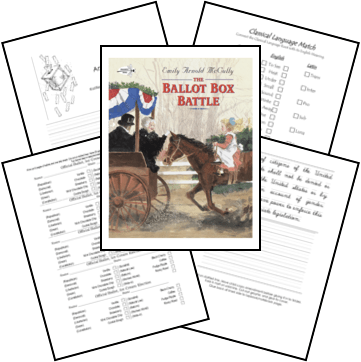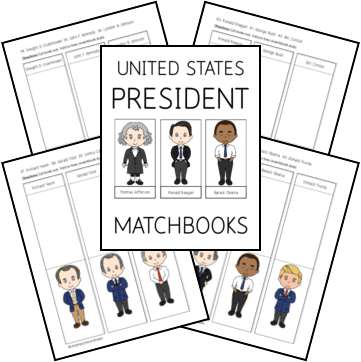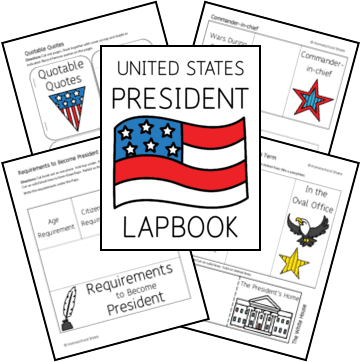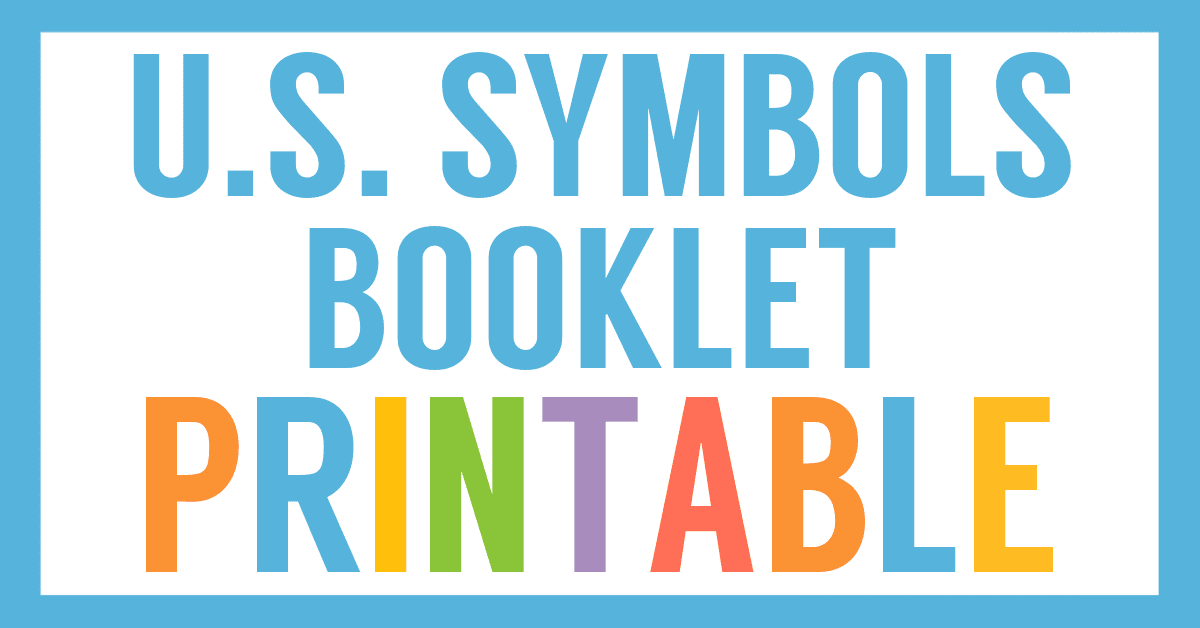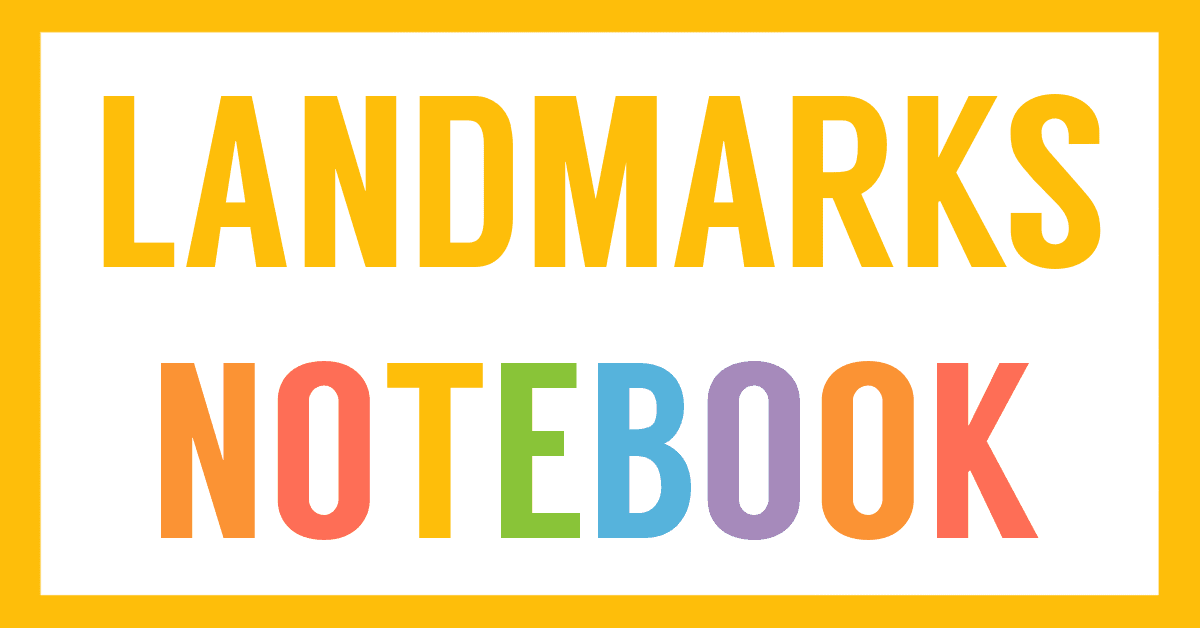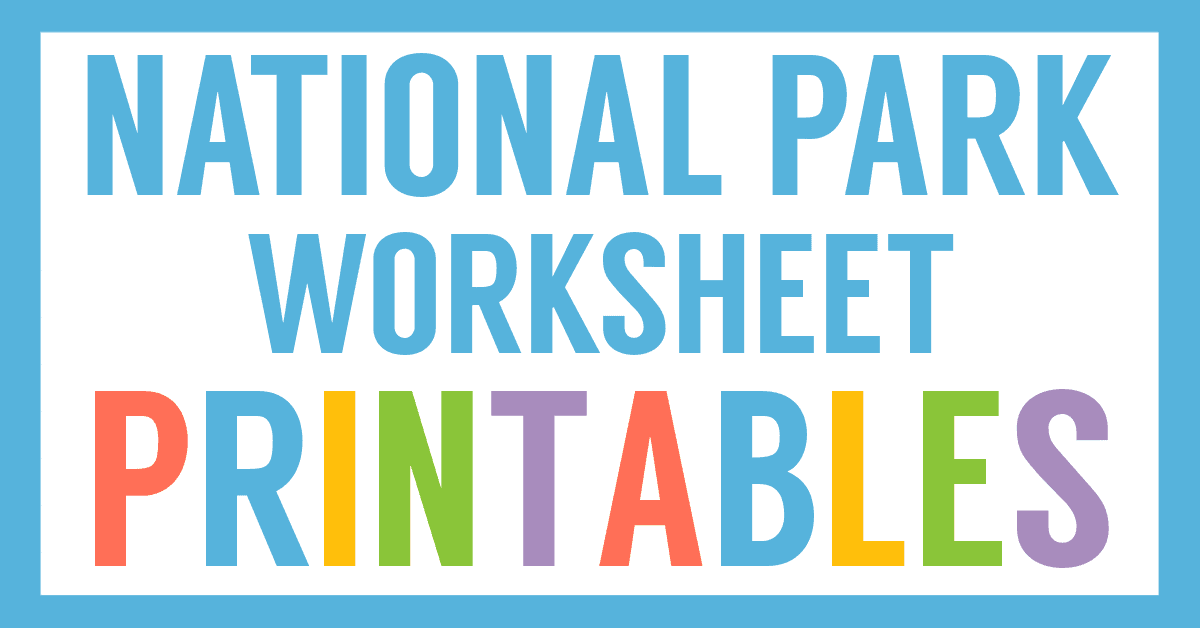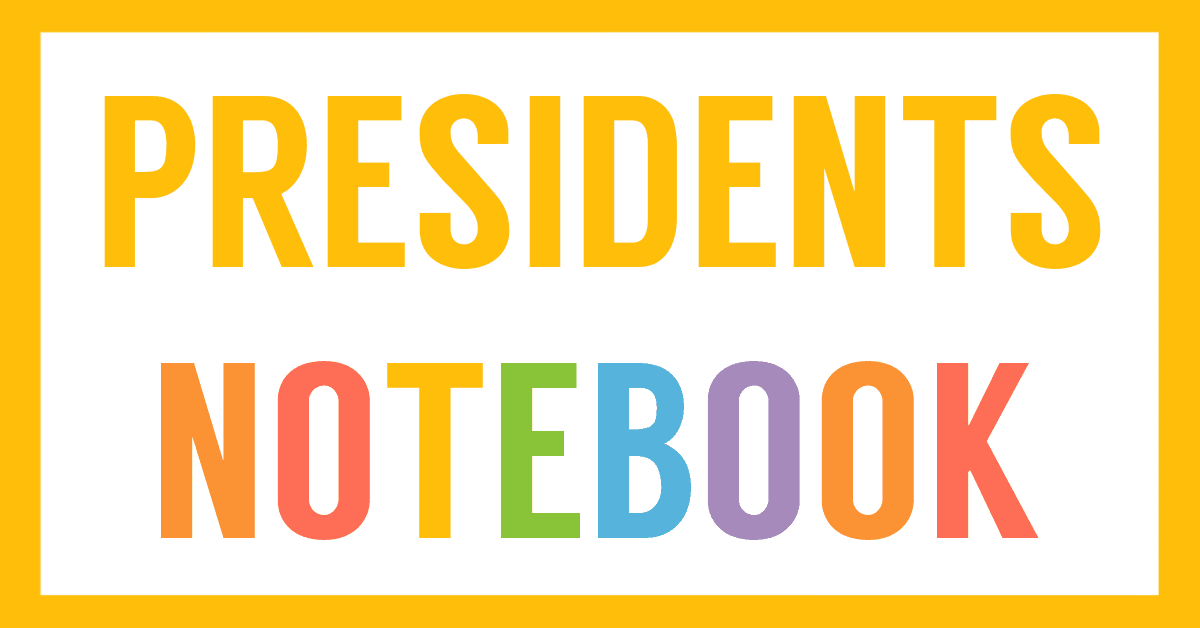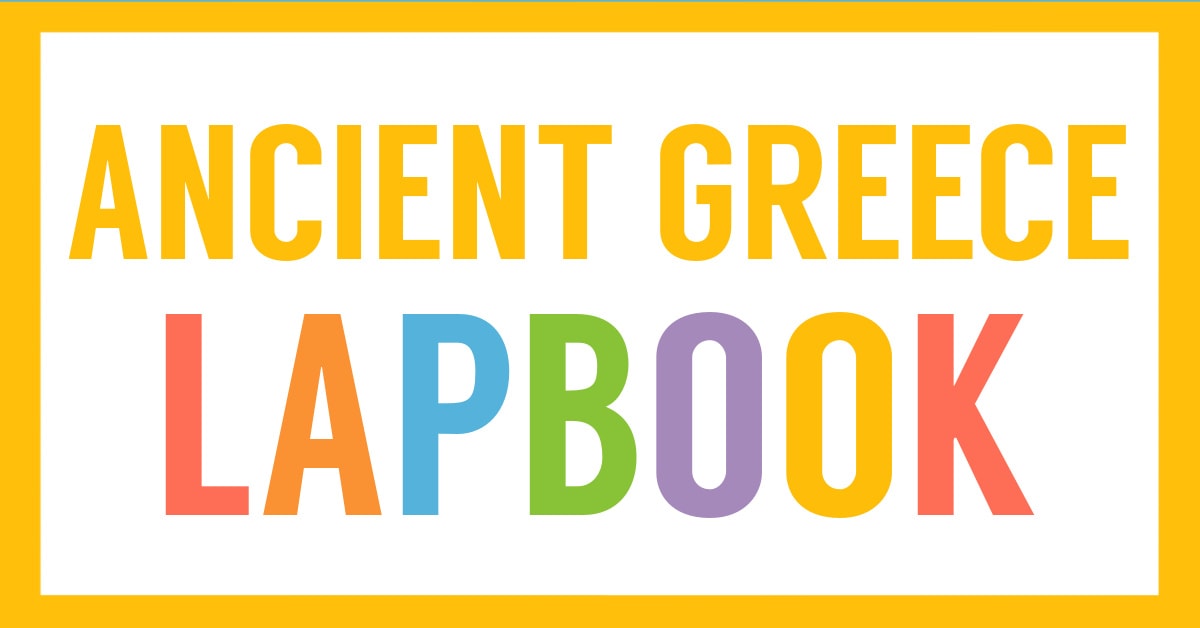Affiliate Disclaimer
We sometimes use affiliate links in our content. This won’t cost you anything, but it helps us to keep the site running. Thanks for your support.
The inspiring story of a young girl named Cordelia whose relationship with her neighbor, the great suffragist Elizabeth Cady Stanton, inspires her to a remarkable act of courage.
from The Ballot Box Battle at amazon.com
Learn all about this history of voting, Elizabet Cady Stanton, suffrage, and so much more with this free The Ballot Box Battle unit study.
Thanks to Wende for preparing this The Ballot Box Battle unit study and the printables.
The Ballot Box Battle Unit Study Lessons
This unit study includes lessons and printables based on the book The Ballot Box Battle by Emily Arnold McCully.
Here are some sample lessons from the The Ballot Box Battle Unit Study.
Voting – Mrs. Stanton was not allowed to vote. She met all the criteria for voting, being literate, affording the poll tax, being over twenty-one years old, etc. She could not vote in 1880 because she was a woman. Does your child know who is allowed to vote today? Currently, any citizen of the United States who is 18 years or older may vote. But it wasn’t always this way. Throughout the history of America, there have been many groups of people who were not allowed to vote. Discuss the progression of voting rights with your child:
Colonial Times – The colonies each made their own laws regarding who was allowed to vote. Generally, you had to be a white Protestant male over the age of 21 who owned land to cast your ballot. The colonies usually had chosen religions, and you had to be a member of that church to vote in that colony.
Post-Revolution – While voting laws were still left up to the individual states, more and more states were eliminating the restrictions of property ownership to vote. They were instead instituting a poll tax, which each person who wanted to vote had to pay. Also, since in the Bill of Rights, effective December 15 1791, no law prohibiting the free exercise of religion could be established, a person’s religious affiliation could no longer prevent them from voting.
15th Amendment – In 1870, after the Civil War, the 15th Amendment was passed which said:
The right of citizens of the Unites States to vote shall not be denied or abridged by the United States or by any State on account of race, color, or previous condition of servitude.
This amendment gave Black Americans, even those who were once enslaved, the right to vote. There were still many states, though, that did not want Black Americans to vote, so they instituted a literacy test. This was a test of reading ability and comprehension and was used to determine if a person was fit to vote. As most of the Black Americans could not read at that time, they therefore could not vote. This plan backfired though, as there were also many white people that could not read, so some states then made a “grandfather clause,” saying that even if you could not read, if your grandfather had the right to vote, then you do, too. This still prevented many Black people from voting, as most of their grandfathers had never had the right to vote because they were enslaved.
19th Amendment – After nearly a century of suffragists trying to get women the right to vote, the 19th Amendment was ratified in 1920. It said:
The right of citizens of the United States to vote shall not be denied or abridged by the United States or by any State on account of sex.
This amendment to the Constitution nearly doubled the number of voters, and all the work of Mrs. Stanton and others finally came to fruition.
24th Amendment – The poll taxes, which were in part to keep Black people from voting, were abolished with the passing of this amendment:
The right of citizens of the United States to vote in any primary or other election for President or Vice President, for electors for President or Vice President, or for Senator or Representative in Congress, shall not be denied or abridged by the United States or any State by reason of failure to pay any poll tax or other tax.
26th Amendment – The most recent amendment concerning voting rights, the 26th Amendment was ratified in 1971. It lowered the legal voting age from twenty-one to eighteen. It states:
The right of citizens of the United States, who are eighteen years of age or older, to vote shall not be denied or abridged by the United States or by any State on account of age.
You can grab a copy of the entire The Ballot Box Battle Unit Study and Lapbook in an easy-to-print file at the end of this post.
The Ballot Box Battle Printables
In addition to the unit study lessons, this file also includes these printables for your student’s notebook:
- Where in the United States Is New Jersey? Shutterfold Book
- The 19th Amendment Notebook Page
- The 19th Amendment Copywork
- Hat Drawing Mini-book
- Strong Women of the Bible Mini-book
- Classical Language Matching Activity Page
- Ice Cream Election Ballots
- Ice Cream Election Tally Page
- What I Like About Me Notebook Page
- November Calendar
- The Presidents Flap Book
- Compare and Contrast 1825 and 1880 Venn Diagram Mini-book
- Vocabulary Flap Book
- Who Could Vote? Flap Book
How to Get Started with Your The Ballot Box Battle Unit Study & Printables
Follow these simple instructions to get started with the The Ballot Box Battle Unit Study:
- Buy a copy of the book, The Ballot Box Battle, or borrow one from your local library.
- Print the The Ballot Box Battle unit study.
- Choose the lessons you want to use with your student (a highlighter works great for this).
- Choose and prepare the lapbook printables you want to use with your student.
- Learn some valuable history lessons with this The Ballot Box Battle unit study.
Get Your Free The Ballot Box Unit Study & Printables
Simply click on the image below to access your free The Ballot Box Battle Unit Study and Lapbook.

